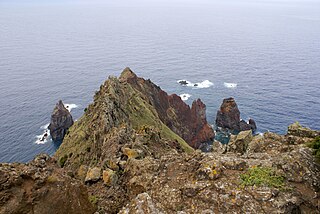
Epipactis leptochila, the narrow-lipped helleborine, is a species of orchid in the genus Epipactis. Found in chalk or limestone-based beech and hornbeam woodland in southern England, the orchids are also found with birch and alder trees in Scotland and the north of England. The narrow-lipped helleborine blooms from early June to mid-August. Epipactis leptochila is also found in parts of northern Europe but it is known for its presence in England. Due to woodland clearing, the orchids are becoming less common.

Beskydy Protected Landscape Area (PLA) is the largest PLA in the Czech Republic. The area is 1,160 km2 (448 sq mi). It lies in the south-eastern part of the Moravian Silesian and eastern part of Zlín regions, on the border with Slovakia. All its area belongs to the Outer Western Carpathians and comprises most of the Moravian-Silesian Beskids Range, a large part of the Vsetínské vrchy Range, and the Moravian part of the Javorníky Range. In Slovakia, Kysuce Protected Landscape Area borders the area.
Discus guerinianus is a species of small air-breathing land snail, a terrestrial gastropod mollusk in the family Discidae, the disk snails.

DPSIR is a causal framework for describing the interactions between society and the environment: Human impact on the environment and vice versa because of the interdependence of the components.

Carex acuta, the acute sedge, slender tufted-sedge, or slim sedge, can be found growing on the margins of rivers and lakes in the Palaearctic terrestrial ecoregions in beds of wet, alkaline or slightly acid depressions with mineral soil.

The Baixa da Ponta dos Rosais is an oceanic plateau located north-northwest off the coast of Ponta dos Rosais, a promontory in the municipality of Velas on the island of São Jorge in the Portuguese archipelago of the Azores. It is located approximately 3 miles (4.8 km) from the coast and 10 miles (16 km) from the port of Velas. It is a popular destination for divers frequenting the Azores.

Somiedo Natural Park is a natural park located in the central area of the Cantabrian Mountains in the Principality of Asturias in northern Spain.

The Bornrieth Moor is the remains of a raised bog in the German district of Celle and belongs to the Südheide Nature Park. It has an area of 115 hectares. The bog, which has had most of its peat extracted, was reflooded and placed under nature conservation protection in 1988. The moor was also designated as a Special Area of Conservation. The responsible nature conservation authority is the district of Celle. The area is out-of-bounds to the public. Several cranes have turned up here again and are breeding. The otherwise rare bog myrtle is common here. Much of the moor is covered by the common reed ('Phragmites'). Bog asphodel, cottongrass (Eriophorum) and sundews (Drosera) may also be found here.

Monte Lozzo is a mountain of the Veneto, Italy. It has an elevation of 324 metres (1,063 ft). It is also a minor tourist attraction.

Kylecorragh Wood is an old oak woodland along the freshwater stretches of the River Nore in County Kilkenny, Ireland. Located 5 kilometres (3.1 mi) west of New Ross, it consists of 100 acres (400,000 m2). Kylecorragh Woods are of regional importance as an relatively undisturbed example of the original deciduous woodland which covered the river valley.

The Balta Mică a Brăilei Natural Park is a protected area which is situated in Romania, in Brăila County, on the administrative territory of communes Berteștii de Jos, Chiscani, Gropeni, Mărașu and Stăncuța.
Priocnemis coriacea is a large species of pepsid spider wasp characterised by having plentiful erect hair on the face and propodeum. It is a member of the subgenus Umbripennis.

Nakskov Fjord is an inlet in the west of the island of Lolland, Denmark. It is about 12 km (7.5 mi) long. There are about 10 small islands located in the fjord. The largest town in the area is Nakskov. The area is a designated bird sanctuary.
The Common Database on Designated Areas or CDDA is a data bank for officially designated protected areas such as nature reserves, protected landscapes, national parks etc. in Europe.

Salix repens, the creeping willow, is a small, shrubby species of willow in the family Salicaceae, growing up to 1.5 metres in height. Found amongst sand dunes and heathlands, it is a polymorphic species, with a wide range of variants. In the UK, at least, these range from small, prostrate, hairless plants at one end of the spectrum to taller, erect or ascending silky-leaved shrubs at the other. This wide variation in form has resulted in numerous synonyms.
The Biodiversity Monitoring Switzerland (BDM) is a Swiss Confederation programme for the long-term monitoring of species diversity in Switzerland.

Baixo Islet, also known locally as Ilhéu do Carapacho and historically as Ilhéu dos Homiziados, is a small uninhabited islet group located off the southeast coast of the island of Graciosa in the Portuguese archipelago of the Azores. Along with Praia Islet to its north, Baixo Islet is one of two main breeding places of Monteiro's storm petrel, an endemic marine bird of the Azores.

The Madalena Islets are two uninhabited islets located in the Faial-Pico Channel about 0.5 nautical miles away from Madalena harbor, off the coast of the island of Pico in the Portuguese archipelago of the Azores. The islets are also visible from Horta, Faial, and from the ferries which travel regularly between Horta and Madalena. Locally, the shorter of the two islets is known as Ilhéu Deitado, while the taller islet is known as Ilhéu em Pé.

The Rosais Islets are two uninhabited rocky islets located just off the extreme northwestern coast of the island of São Jorge in the Portuguese archipelago of the Azores.

Topo Islet is a vegetated uninhabited islet just off the extreme southeastern tip of the island of São Jorge in the Portuguese archipelago of the Azores.















